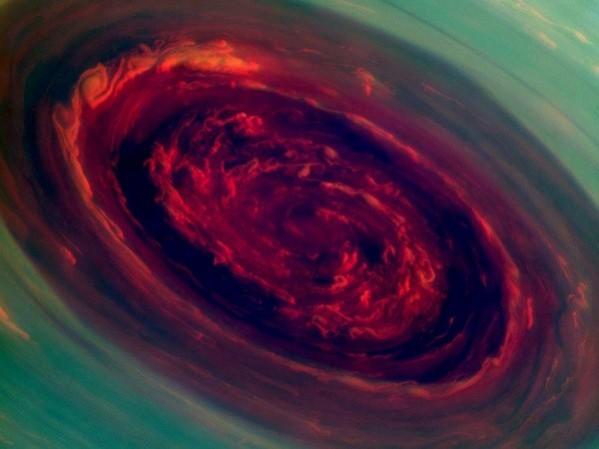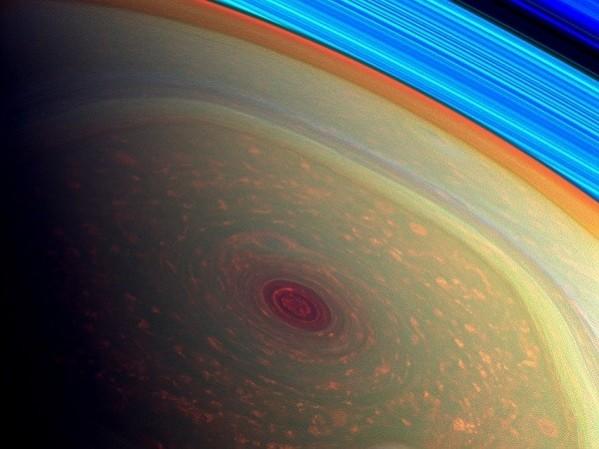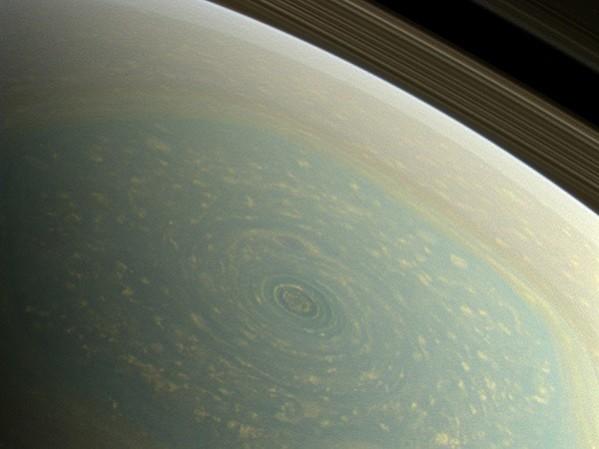NASA's Cassini spacecraft has captured stunning images of the 2,000-km (1,250 miles) wide monstrous hurricane swirling around Saturn's north pole.
Cassini's high-resolution images show the first close-up view of the hurricane's eye that is 20 times larger than the average hurricane eye on Earth. The hurricane is sitting at the centre of a large, mysterious, six-sided weather pattern known as the hexagon.

According to NASA scientists, thin, bright clouds are swirling around the storm at a speed of 530 kmph (330 mph).
"We did a double take when we saw this vortex because it looks so much like a hurricane on Earth," Andrew Ingersoll, a Cassini imaging team member at the California Institute of Technology in Pasadena, said in a statement. "But there it is at Saturn, on a much larger scale, and it is somehow getting by on the small amounts of water vapor in Saturn's hydrogen atmosphere."
Scientists will be studying the hurricane on Saturn to get some insight into the terrestrial hurricanes on Earth, as they share similar features. For instance, both have a central eye with no clouds or very low clouds. Other features include high clouds forming an eye wall and a counter-clockwise spin in the northern hemisphere.
But, there are some differences between the terrestrial hurricane on Earth and Saturn's north polar vortex. One aspect is that the hurricane on Saturn is much bigger than the one on Earth and it swirls faster. The wind in the eye wall of Saturn's hurricane blows over four times faster than hurricane-force winds on Earth.
According to the scientists, the Saturnian hurricane is nearly immobile and is locked onto the planet's north pole. Unlike the Earth's hurricanes that drift northward, the Saturnian hurricane remains stationary as it is already located far north. "The polar hurricane has nowhere else to go, and that's likely why it's stuck at the pole," said Kunio Sayanagi, a Cassini imaging team associate at Hampton University in Hampton, Va.
Scientists believe that the storm has been positioned on Saturn's north pole for several years. Until now, scientists were not able to see high-resolution images as Cassini spacecraft arrived in the Saturn system in 2004, when the planet's north pole was dark owing to winter. When spring arrived in 2009, the planet's northern hemisphere was flooded with sunlight.
Scientists had to change the angle of orbit of Cassini so that the spacecraft could get better view of the north pole and capture high-resolution images of the hurricane-like storm.









!['Abhishek will win national award': Abhishek Bachchan's poignant act will tug your heartstrings in slice of life emotional saga I Want To Talk [trailer review]](https://data1.ibtimes.co.in/en/full/805617/abhishek-will-win-national-award-abhishek-bachchans-poignant-act-will-tug-your-heartstrings.jpg?w=220&h=138)



